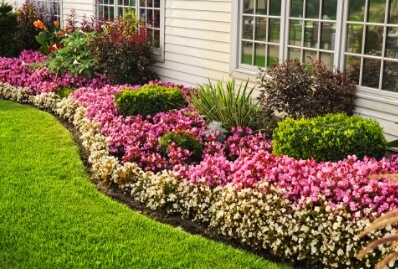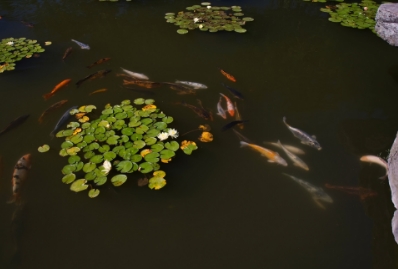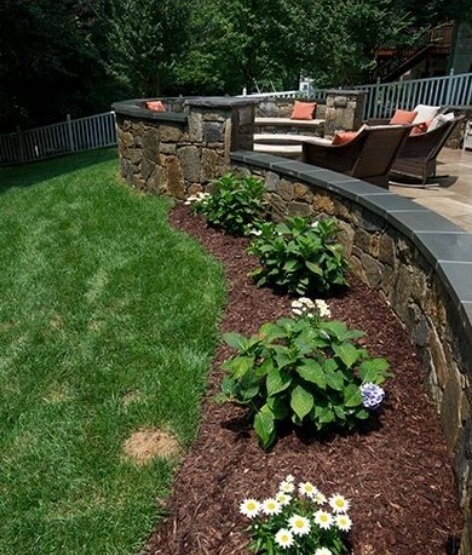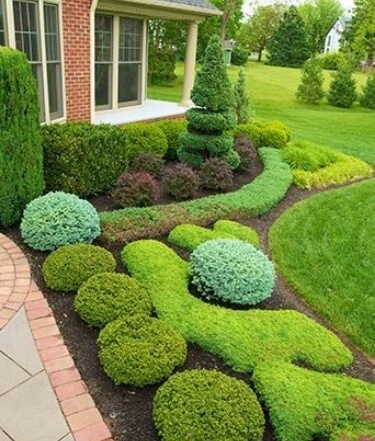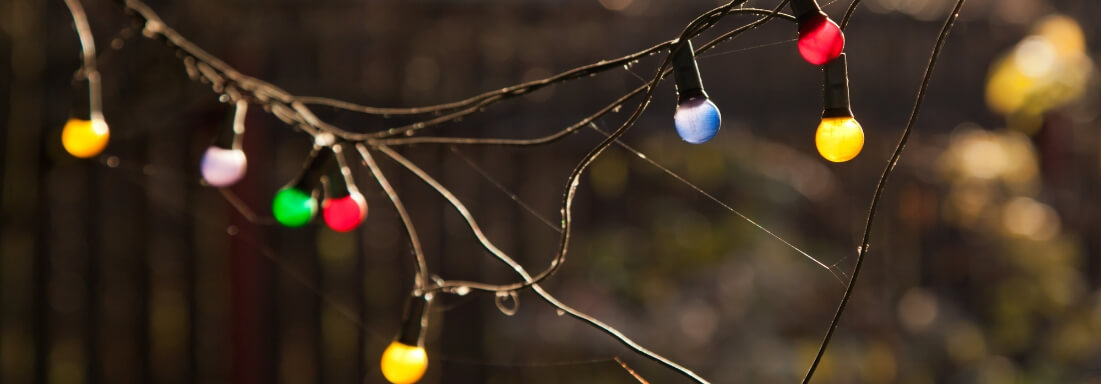
A vibrant, colorful garden in spring starts with fall bulb planting. If you’re in Maryland and wondering when to plant tulips, daffodils, or other spring-blooming bulbs, timing is everything! The right soil temperature, depth, and sunlight exposure maximize bloom success in the next growing season.
In this guide, we’ll cover:
✅ Best planting times for tulips, daffodils, and other bulbs
✅ Soil, depth, and spacing recommendations for healthy growth
✅ Expert tips to prevent common mistakes
✅ How to care for bulbs after planting
When to Plant Bulbs in Maryland (By Flower Type)
🌷 Tulips (Tulipa spp.)
1. Best planting time: Plant tulip bulbs between late October and early December, ensuring they have enough time to establish roots before the ground freezes. Avoid planting too early, as warm temperatures may cause premature sprouting.
2. Soil temperature: For optimal growth, the soil should be between 40-50°F at a depth of 6 inches. Use a soil thermometer to check before planting, as bulbs need cool conditions to root properly.
3. Depth & spacing: Plant bulbs 6-8 inches deep and 4-6 inches apart to provide enough room for root expansion. Planting too shallow can expose bulbs to frost, while overcrowding may limit bloom potential.
4. Sunlight needs: Tulips thrive in full sun, requiring at least 6 hours of direct sunlight daily. Choose a planting spot that gets morning or afternoon sun for the best results.
5. Watering: Water the bulbs immediately after planting to help them settle and encourage early root development. Avoid overwatering, as excessive moisture can cause bulb rot.
6. Fertilizing: Mix bone meal or a balanced bulb fertilizer into the soil during planting to provide essential nutrients. This helps bulbs develop strong roots and enhances next season’s bloom quality.
7. Pro tip: Unlike daffodils, tulips are not always perennial, meaning some varieties will only bloom for one season. Consider planting Darwin Hybrid or species tulips if you want longer-lasting flowers.
🌼 Daffodils (Narcissus spp.)
1. Best planting time: Mid-September to late November is ideal for planting daffodil bulbs. This timing allows them to establish strong roots before winter dormancy, ensuring vibrant spring blooms.
2. Soil temperature: Daffodil bulbs thrive when planted in soil that’s between 45-50°F. Use a soil thermometer to check, as warmer temperatures can delay root development, affecting bloom quality.
3. Depth & spacing: Plant bulbs 6 inches deep and 6 inches apart to provide enough room for growth. This spacing prevents overcrowding and ensures each plant receives sufficient nutrients and moisture.
4. Sunlight needs: Daffodils grow best in partial to full sun, requiring at least 4+ hours of sunlight daily. They can tolerate some shade, but full sun exposure produces the healthiest blooms.
5. Watering: Keep the soil slightly moist after planting, but avoid waterlogging, which can cause bulb rot. After the bulbs establish, they require minimal watering until spring.
6. Longevity: Unlike tulips, daffodils are true perennials, meaning they will return year after year with minimal maintenance, making them a long-term investment for your garden.
7. Pro tip: For a natural-looking display, plant daffodil bulbs in clusters of 5-10 rather than in straight rows. This mimics how they grow in the wild and creates a fuller, more vibrant spring garden.
🌸 Hyacinths (Hyacinthus spp.)
1. Best planting time: The best time plant between September and November before the ground freezes. This will gives the bulbs enough time to establish roots before winter dormancy, leading to vibrant spring blooms.
2. Depth & spacing: For optimal growth, plant bulbs 5-6 inches deep and 3-5 inches apart. Proper spacing ensures good airflow, reducing the risk of fungal diseases.
3. Sunlight needs: Hyacinths thrive in full sun to partial shade, requiring at least 4-6 hours of sunlight daily. More sunlight leads to stronger, more fragrant blooms.
4. Fertilizing: Use a low-nitrogen bulb fertilizer when planting to promote healthy root development without excessive leaf growth. Apply a balanced slow-release fertilizer in early spring for sustained nutrition.
5. Pro tip: Highly recommend to wear gloves when handling hyacinth bulbs—they contain skin-irritating oxalates, which can cause itching or rashes. Washing your hands after planting is also recommended.
🌷 Crocuses (Crocus spp.)
1. Best planting time: October is ideal for planting crocus bulbs. This early fall timing allows them to establish roots before winter, ensuring vibrant blooms in late winter or early spring.
2. Depth & spacing: Plant bulbs 3-4 inches deep and 2-3 inches apart. Since crocuses are small, closer spacing creates a fuller display of flowers.
3. Sunlight needs: Crocuses thrive in full to partial sun. They bloom before trees leaf out, so they can be planted under deciduous trees where they will get plenty of sunlight in early spring.
4. Cold hardiness: Crocuses are extremely hardy and can survive Maryland’s freezing winter temperatures. Snow cover can even act as insulation, protecting the bulbs from extreme cold.
5. Pro tip: Plant crocus bulbs in groups of 10-20 for a natural, meadow-like effect. They also look great when planted in lawns, creating a colorful spring surprise before the grass fully wakes up.
❌ What NOT to Plant in Fall
🌻 Dahlias – These should be planted in spring after the last frost, as they are not winter-hardy in Maryland.
Best Practices for Planting Bulbs in Maryland
🌡️ 1. Monitor Soil Temperature Before Planting
-
Bulbs need cool soil but shouldn’t be planted when the ground is frozen
-
Ideal soil temperature: 40-50°F (check with a thermometer)
-
First frost in Maryland: Early October – early November
-
Rule of thumb: Wait until nighttime temperatures are consistently below 50°F
☀️ 2. Choose the Right Location for Sunlight
-
-
Most bulbs need at least 4-6 hours of direct sunlight
-
Avoid planting in permanently shaded areas (e.g., under dense trees)
-
Spring bonus: Since deciduous trees lose their leaves, bulbs in partially shaded areas may still get enough light
-
💧 3. Ensure Proper Drainage to Prevent Rot
-
Bulbs hate soggy soil—plant in raised beds or well-draining soil
-
If you have clay soil, mix in sand or compost to improve drainage
-
Pro tip: If water pools after heavy rain, avoid planting bulbs there
🛠️ 4. Digging Depth & Spacing: Get it Right
-
Rule: Plant bulbs at a depth 2-3 times their height
-
Example: A 2-inch bulb should be planted 4-6 inches deep
-
Space bulbs according to their size—larger bulbs need more space
| Plant | Best Planting Time | Depth & Spacing | Sunlight Needs | Cold Hardiness |
|---|---|---|---|---|
| Tulips | October – December | 6-8 inches deep, 4-6 inches apart | Full sun (6+ hours daily) | Not always perennial, some bloom only one season |
| Crocus | September – October | 3-4 inches deep, 2-3 inches apart | Full to partial sun | Can survive Maryland’s winter temperatures |
| Daffodils | Mid-September to late November | 6 inches deep, 6 inches apart | Partial to full sun (4+ hours daily) | True perennials, bloom every spring |
| Hyacinths | September – November | 5-6 inches deep, 3-5 inches apart | Full sun or partial shade | Cold-hardy and bloom in early spring |
💦 5. Watering & Mulching After Planting
-
Water bulbs right after planting to help root development
-
Apply a 2-3 inch mulch layer (straw, leaves, or bark) to:
✅ Retain moisture
✅ Insulate against winter frost
✅ Prevent weed growth
🌱 6. Long-Term Care & Fertilization
-
First-year bulbs don’t need fertilizer—they store nutrients internally
-
For perennial bulbs, apply organic compost or cow manure after flowering
-
After blooming, don’t cut back the leaves immediately—let them wither naturally to store energy for the next season
🌿 Common Mistakes to Avoid
🚫 Planting bulbs too late → Planting bulbs too late means they may not have enough time to establish strong roots before winter sets in. This can result in poor growth or no blooms at all when spring arrives. Aim to plant at least 6 weeks before the first frost.
🚫 Overwatering → Overwatering your bulbs, especially in soil that’s heavy with clay, can cause the bulbs to rot. Ensure the soil is well-draining and water the bulbs only when necessary, ideally after planting to settle them in.
🚫 Not protecting bulbs from squirrels & rodents → Squirrels and other rodents love digging up and eating bulbs. Protect your bulbs by covering them with wire mesh or sprinkling cayenne pepper around the planting site to deter them from digging.
🚫 Ignoring soil drainage → Bulbs need well-drained soil to thrive. Poor drainage can lead to fungal infections, which can rot the bulbs. Ensure your soil drains properly, or amend it with compost or sand to improve airflow and prevent standing water.
Ensure a Beautiful Spring Garden in Maryland
By following proper bulb planting times, depth guidelines, and care tips, your Maryland garden will bloom beautifully with tulips, daffodils, and other spring favorites.
🌷 Need professional landscaping help? Contact Four Season Landscaping for expert bulb planting services!
